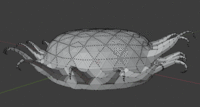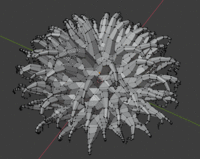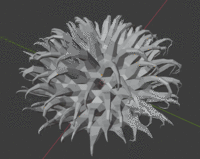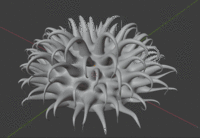November 30, 2020
Blender Report


As for software, I've focused on working with a program called Houdini for the last 12 years. I used to use Maya, but at some point I hit the ceiling of its capabilities and Houdini was on the rise at the time. You can download a free copy of it to play around with! The learning curve is insane, I'm literally learning something new every day 12 years in, but it's extremely powerful software that can handle pretty much anything you can think of. Blender is awesome, though! I have a lot of friends who started out in Blender and some still work in it -- I still find the interface EXTREMELY confusing but I'm so impressed what the Open Source Software community has built. I'm glad you're checking it out -- it's hard at first but once you get into it, all of these pieces of software have a lot of overlap in the ideas they use and it can be pretty straightforward to bounce from one to another.
Emphasis, Mine: "...in the ideas they use..."
In the recent Crazy Wall blogpost, close observers will notice an emphasis about how technological innovation induces societal change (upheaval, revolution...), the shock wave that propulsed Modernity in all of its forms. The invention of the camera released painting from its reportage function. The ubiquity of print material and the violence of WWI trench warfare spurred collage and DADA. The invention of airplanes carried cameras aloft where the horizon line disappeared from the picture plane, a key insight that fueled the Suprematists and Constructivists. Pop Art fed on advertising, print, movies and TV. Op Art and Photorealism had a brief pulse from photographic optics. It's an open question as to whether the Minimalists and Conceptualists fed on the ideas issuing from the huge mainframe computers of their era, but after Steve Jobs got busy in Silicon Valley, "art as a set of instructions" *cough* Sol LeWitt *cough* sure looks clairvoyant from the vantage point of 2020. As the aughts ramped up to the teens of our 21st century, curators here and there attempted to mount shows based on how artists were influenced by the internet and Photoshop. Results on that front were mixed and un-conclusive.
Now, we have the phenomena of Blender. We live in a sea of imagery that is cooked via software species like this.
Remember when people were building their own computers, when software was open, when batteries weren't sealed, when the Information Age was a promise of a transparent future? Well, the creator and owner Ton Roosendaal is one of the few yet faithful to those principals. Watch the link and think about how nearly all of the major social media platforms are greedily monetizing the free labor of the multitudes and increasingly acting the part of the tyrant along the way. "You work, I eat."
Well, while I'm feeling good now that I have overcome the initial speed bumps of the Blender learning curve (CAUTION! CAUTION! DUNNING-KRUGER EFFECT!), it is way too early for me to sum up the kaleidoscope of capabilities that is Blender (the slimmest tip of the iceberg) and the way it splays out form and vision (I sense the echo of Rudolph Arnheim, by the way)... but I can share some of the imagery that I am attempting with this software.
Blender calls them meshes. Vertices, edges and planes. Dots, lines and surfaces. We start with a small group of geometric primitives (planes, cubes, spheres, cylinders...) and all virtual objects are topologically manipulated into the desired final form.
The big trick is to navigate the multitude of control windows that alter form while deftly riding the interface that gives us a bristling window on what we are doing. Blender is like a Swiss Army Knife of software. It's like riding a bike that can become a car, or a truck, or plane or a train or a helicopter.
A press of a button will make the meshes disappear and what I suppose to be the interpolating mathematics of the software can deliver a first iteration. A formal expression of a blunt assemblage of planes.
A press of another button directs the software to further smooth out the geometry. Frankly, the first time I did this was quite a rush.
A few more button s later takes us to "subdivision surface modifier", an algorithm that adds geometry via interpolation. I beg your pardon, please, as I conjure Michelangelo's Carrera marble right about now.
***
Postscript
Some links for background info:
In the world of YouTube Blender instructables, IanHubert is clever, funny and concise.
Ducks
Blender website here.
Posted by Dennis at November 30, 2020 5:20 PM




Leave a comment